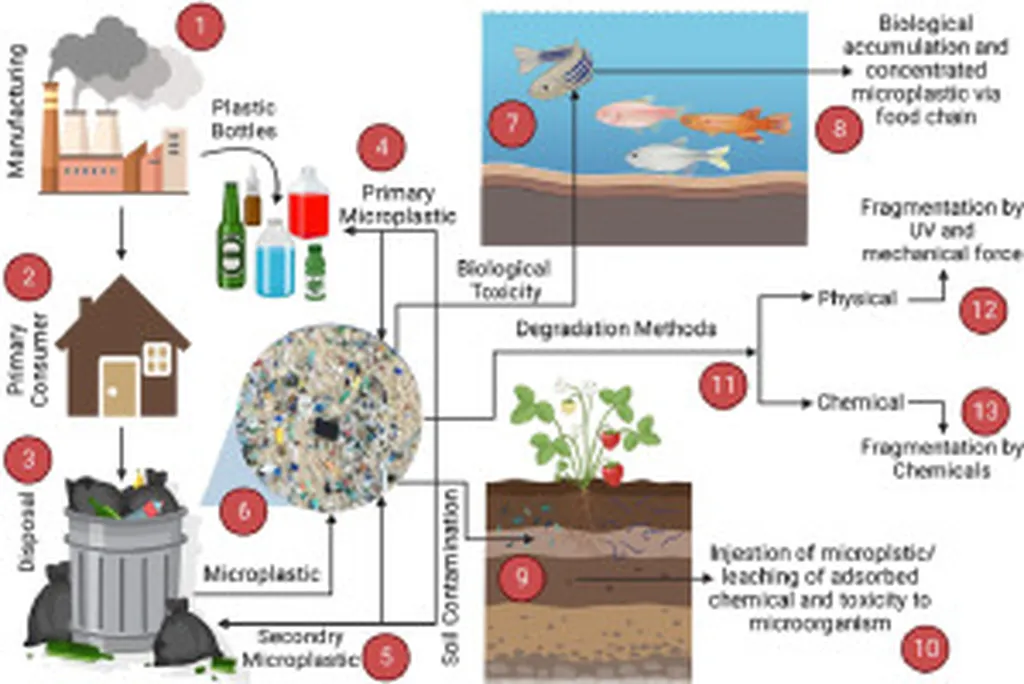In a groundbreaking development, researchers have introduced a novel method to simultaneously measure the 3D morphology of microplastics (MPs) and the concentration of polycyclic aromatic hydrocarbons (PAHs) in real time. This advancement, published in the journal *Scientific Reports* (translated as *Nature Research: Scientific Reports*), could significantly impact environmental monitoring and the energy sector, where MPs and PAHs often co-occur, posing persistent health and ecological risks.
The study, led by Changqing Li from the Key Laboratory of Smart Breeding at Tianjin Agricultural University, leverages digital holographic microscopy to provide a comprehensive, in situ analysis of these critical parameters. “Our method offers a simple yet powerful approach to understanding the adsorption mechanisms of PAHs onto microplastics,” Li explained. “By measuring both the physical and chemical changes in real time, we can derive valuable insights into the kinetics, thermodynamics, and isothermal models of adsorption processes.”
The significance of this research lies in its ability to address a longstanding challenge in environmental science: the lack of a comprehensive technology to simultaneously measure dynamic MP morphologies and PAH concentrations. Traditional methods often require separate measurements, which can be time-consuming and less accurate. The new technique uses a digital off-axis holographic microscopic system combined with a phase difference method to measure the refractive index of the solution, determining PAH concentration with a 38% higher signal-to-noise ratio compared to fluorescence spectrophotometry.
For the energy sector, this advancement is particularly relevant. Microplastics and PAHs are common contaminants in water bodies near industrial sites, including those associated with oil and gas production. Understanding their interaction can lead to better remediation strategies and more effective environmental management practices. “This technology can help energy companies monitor and mitigate the impact of their operations on aquatic ecosystems,” Li noted. “By providing real-time data, it enables proactive measures to reduce pollution and protect biodiversity.”
The broader implications of this research extend beyond the energy sector. In biological and environmental sciences, the ability to co-monitor morphological and chemical parameters in liquid-phase systems opens new avenues for studying interfacial processes. This could lead to innovations in water treatment, pollution control, and ecological research.
As the world grapples with the growing threat of microplastic pollution and the persistent presence of PAHs, this research offers a promising tool for scientists and industries alike. By advancing our understanding of these complex interactions, the study paves the way for more effective environmental protection and sustainable development.
In the words of Li, “This work represents a significant step forward in our ability to characterize and monitor environmental contaminants. It is our hope that this method will be widely adopted and further refined to address the pressing challenges of our time.”

